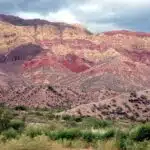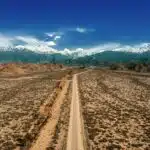Iguazu Falls is one of the most breathtaking natural wonders on the planet, stretching along the border between Argentina and Brazil. If you’re searching for a destination that will captivate your senses, challenge your adventurous spirit, and leave you feeling humbled by the beauty of nature, Iguazu Falls should be at the top of your list.
Known locally as “Cataratas del Iguazú,” the falls consist of an astounding 275 individual drops that span nearly two miles. They are set amidst a lush subtropical rainforest filled with diverse flora and fauna. Whether you’re viewing the falls from Argentina’s Iguazú National Park or Brazil’s Iguaçu National Park, you are guaranteed a spectacle that will leave a lasting impression. The sheer scale, power, and beauty of Iguazu Falls make it a destination like no other.
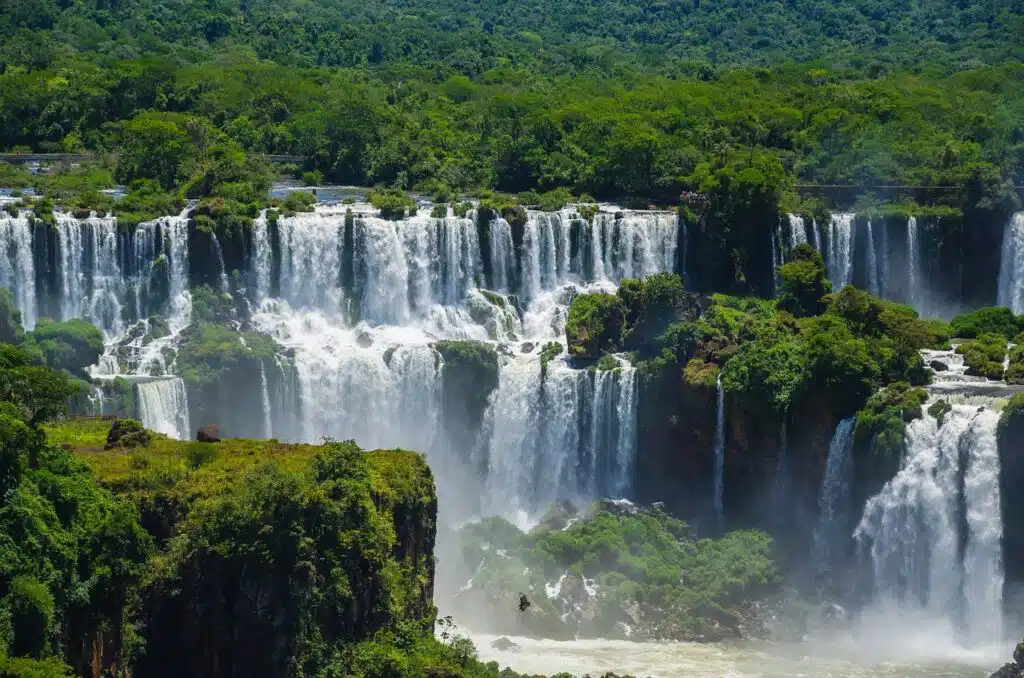
Highlights of Iguazu Falls
One of the most iconic sections of the falls is the Garganta del Diablo, or “Devil’s Throat.” This is the largest and most powerful part of the falls, plunging more than 260 feet into the Iguazu River below. Standing on the viewing platforms, you’ll be engulfed by the mist and the roar of the water as it crashes down. The experience is exhilarating, as the sheer force of nature envelops you from all sides. The sight of the water pouring into the U-shaped chasm is nothing short of awe-inspiring.
Trails and walkways
But the falls are not just about the dramatic drop. Iguazu Falls offers multiple trails and walkways, allowing you to explore its grandeur from different vantage points. The Argentine side provides an up-close experience, with several trails that bring you right to the edge of the falls. You can walk across bridges, stand on platforms above rushing water, and feel the spray of the falls against your skin. The Brazilian side, on the other hand, is known for its panoramic views, offering sweeping vistas of the falls in their entirety.
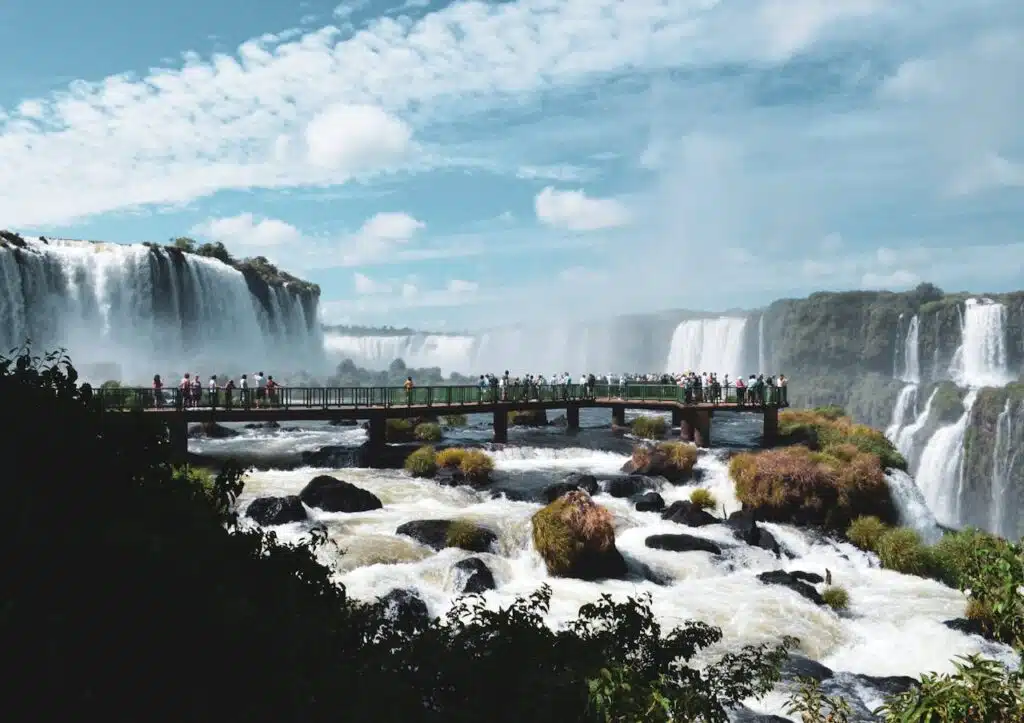
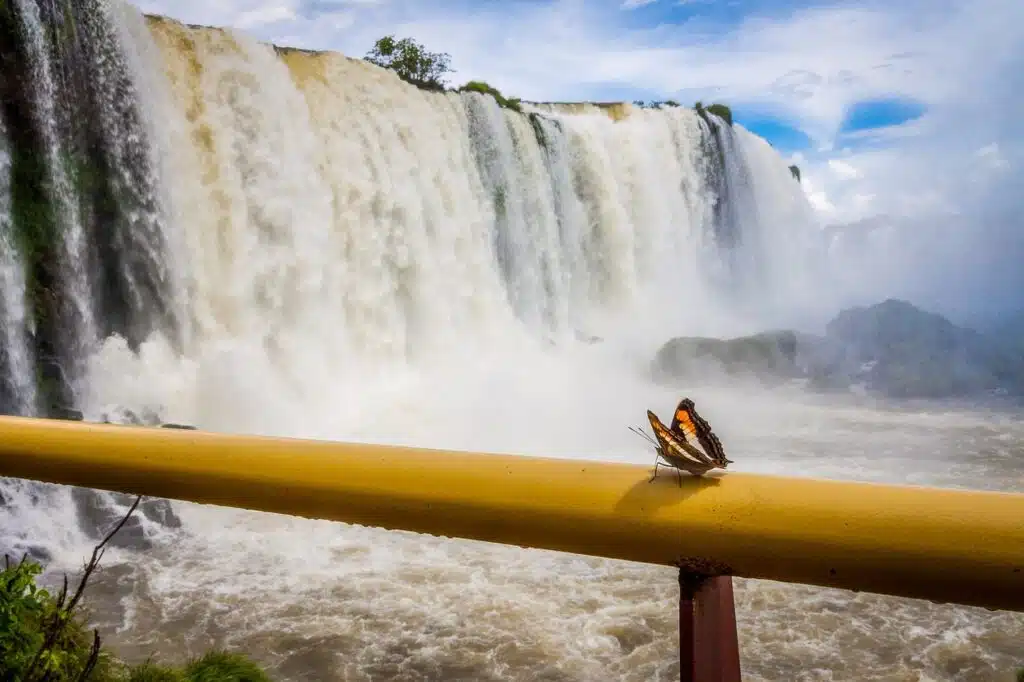
A Subtropical Wonderland
Iguazu Falls isn’t just about waterfalls—it’s also a haven for nature lovers. The falls are surrounded by a vast and vibrant subtropical rainforest teeming with wildlife. As you explore the trails, you may spot colorful toucans, playful monkeys, giant butterflies, and even the elusive jaguar. The biodiversity in this region is simply astounding, with over 2,000 species of plants, 400 species of birds, and countless other animals calling the rainforest home.
The ecosystem around Iguazu Falls is protected by both Argentina’s and Brazil’s national parks, ensuring that this natural wonder remains pristine and undisturbed by human development. The parks are recognized as UNESCO World Heritage sites, further highlighting the importance of conservation in the area. As you walk through the forested paths, you’ll feel connected to nature in a profound way, with the symphony of bird songs and the distant rumble of the falls providing a serene backdrop.
Planning Your Visit to Iguazu Falls
Visiting Iguazu Falls is a relatively straightforward endeavor, but it does require some planning. Getting to Iguazu Falls is easy from both Argentina and Brazil. Many visitors choose to explore both sides of the falls, as each offers unique perspectives and experiences. There are well-organized tours available that will guide you through both the Argentine and Brazilian sides.
When to Visit Iguazu Falls
The best time to visit Iguazu Falls depends on your preferences. Here’s a breakdown to help you decide:
- Rainy Season (November to March): This is when the falls are at their most powerful due to the increased water volume. You’ll witness the full force of the waterfalls, but be prepared for higher humidity, more rainfall, and mist that can occasionally limit visibility. However, this is a prime time for dramatic photos and feeling the immense energy of the falls.
- Dry Season (April to October): The dry season offers more temperate weather and clearer skies, making it perfect for hiking and sightseeing. Though the water volume may be lower, the visibility is better, and there’s less humidity. This is an ideal time for those who want to enjoy long walks through the rainforest and see wildlife in more comfortable conditions.
How to Get There
Getting to Iguazu Falls is easy from both Argentina and Brazil. The falls are accessible from two main cities: Puerto Iguazú in Argentina and Foz do Iguaçu in Brazil. Both cities offer a range of accommodations, from budget-friendly options to luxury resorts.
- From Argentina: Fly into Cataratas del Iguazú International Airport (IGR), located about 20 minutes from Puerto Iguazú. From the town, you can take a taxi or bus to Iguazú National Park. Argentina’s side of the falls is more immersive, allowing you to walk close to the cascades on various trails.
- From Brazil: Fly into Foz do Iguaçu International Airport (IGU). From there, it’s a short drive to Iguaçu National Park. The Brazilian side offers the best panoramic views of the falls, so don’t miss this vantage point.
For those visiting both sides, crossing the border is straightforward with proper documentation (passport and possibly a visa, depending on your nationality). Most tourists opt to stay a few days, giving themselves time to explore both countries’ parks.
💦 Let Iguazu Falls Take Your Breath Away
Whether you’re an adventurer seeking thrills, a nature enthusiast looking to immerse yourself in the beauty of the rainforest, or simply a traveler in search of awe-inspiring sights, Iguazu Falls will not disappoint. It’s a place that evokes wonder, respect, and a deep appreciation for the world we live in. So pack your bags, bring your camera, and get ready to be swept away by the majesty of Iguazu Falls!



